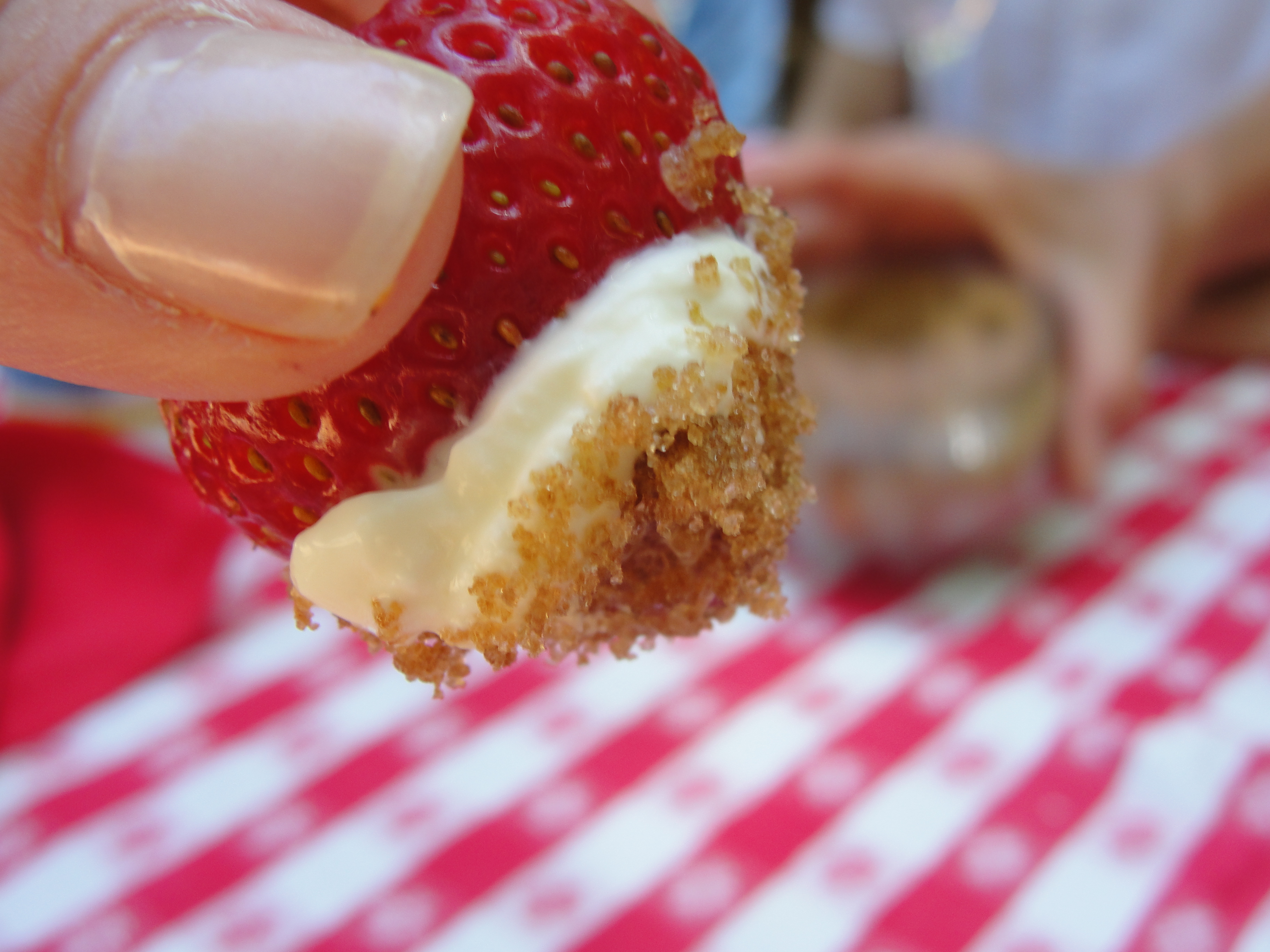Nothing says “Happy Monday” like a spoonful of fresh crème fraiche sitting atop a crispy fried potato. Taste buds, start your engines.
Thicker (and less sour) than sour cream but richer than mayonnaise, this cloud of dairy velvet is one of my favorite low sodium ingredients. You can find crème fraiche in most markets – from a Safeway to a French épicerie – and most brands have incredibly low sodium contents, landing somewhere around 10mg per tablespoon.
It works as an exceptional substitute in recipes that call for saltier spreads and I love to use it in everything from egg salad sandwiches, to a 7-layer dip, and even as a topper for spicy curry lamburgers.
And because of it’s mild flavor and transformative magic, it works equally well in savory and sweet dishes. It will cool off a bowl of pea soup as successfully as it will sweeten a ripe strawberry.
So the next time you see a recipe that calls for mayo, sour cream, yogurt, or even melted cheese, remember your new best friend: crème fraiche. And with at least eight servings per tub, let your creative juices take over. Oh the places it will go…
Chow on.









where is the best place to find creme fraiche in the market? in the dairy section?
It is usually in the refrigerated cheese section with the ricotta and the mascarpone – two other sodium friendly ingredients!
Don’t waste your money or time buying this from a store. Mix one part buttermilk (buy one that’s as far away from expiration date as possible, so you get the most active culture) with one part whipping cream. Cover. Leave out at room temp for 24 hours or so (your first batch might take longer, and ambient temp also affects how long it takes — honestly, I usually set mine on top of the floor register/heater during colder months and just let the furnace do the work). The buttermilk culture will act on the cream, and you end up with wonderful, fresh, home-cultured crème fraiche. Stick it in your fridge and enjoy at your leisure. Anytime you use some, just make sure you leave no less than about a quarter of it in the storage container. Top it up with a new round of whipping cream, cover, swish it around a bit to get things mixed, leave out at room temp for 24-ish hours, rinse and repeat forever.
I’ve been culturing my own crème fraiche (using home-cultured buttermilk ) for almost two years, all with the same batch of culture. It’s just like keeping a bread starter going, but with even less attention or effort.
Wow – I love someone who isn’t afraid to make food products from scratch! Raven, this is great advice and wonderful instructions. Totally awesome.
On a related side note, for those who are on very strict low sodium diets, I will just add that (according to the USDA Nutritional Information website) 1 cup of reduced fat buttermilk has over 200mg of sodium. Now of course, you aren’t going to consume all of that creme fraiche in one sitting – and thus you wouldn’t get all of that sodium at once with this recipe – but in terms of other dishes that use buttermilk, it is good information to have on hand.
Thanks again, Raven!
I *knew* I shouldn’t have deleted all the babbling I’d originally added in about the homemade buttermilk!
I can’t consume commercial buttermilk. At well over 200 mg (every version I’ve found in a store has been 230 to 260 mg), it’s just too high. So I used it once, as a starter for my own first batch of buttermilk, and that’s the last time I touched the commercial stuff. After a few rounds of culturing the homemade version, getting rid of about 75% each time and using the remaining 25% as the starter for the next batch, you get buttermilk with the same sodium content as plain milk, 110-130 mg or so. Which is still high, but WAY better than the commercial version that has twice that much.
This is the same process as mentioned for making creme fraiche. Mix one part buttermilk with one part plain milk (the higher the milkfat, the lower the sodium). Cover, swish it around a bit, and set out at room temp for 24-ish hours (see notes about ambient temp and whatnot in the earlier creme fraiche note). Don’t freak out if/when it separates; that’s normal. Just shake it up to remix (yes, it will separate in the fridge eventually, too — just shake it). Store in fridge, and always save yourself no less than about 25% to use as a starter for the next batch. If you leave it alone for a while and your culture seems to have weakened from lack of use, just make two or three rounds/batches in quick succession, and that will revitalize the culture. And off you go again. I’ve been using the same buttermilk starter for the same two years I’ve been making the creme fraiche.
Mmmm, I love creme fraiche! I’ve never tried it with strawberries and sugar, though. Love that idea.
Love your site! Just feel upon it while looking at other blogs. I have had a high blood pressure issue for 4 years and would love to get off some of the meds. So much sodium everywhere! I try to avoid most of the time, but your ideas will certainly help. Regarding dairy products, what about greek yogurt? Sodium is fairly low in the ones that I get?